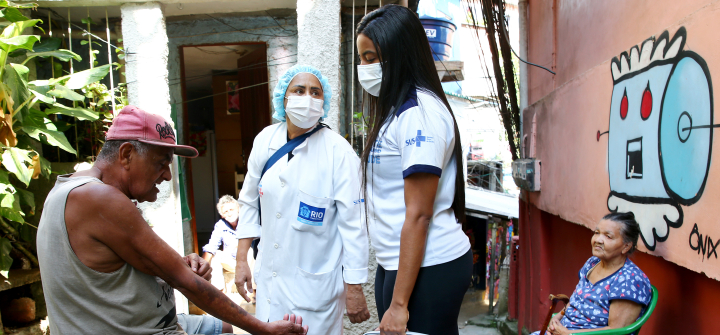Dangerous Myth: ‘We’ve Got All the COVID-19 Tools We Need’
In the lead-up to the next White House Global COVID-19 Summit expected to take place this spring, many advocates are rightly focusing on the urgency of getting more shots in arms and tests and treatments in hands. Yet in trying to build political momentum around new funding commitments, some have argued that the path to ending this pandemic is straightforward—that we have all the tools we need, we just must ensure everyone, everywhere can access them.
While this narrative is seductive in its simplicity, unfortunately, it’s false—and basing global strategy on it could leave the world less prepared for future COVID-19 curveballs.
To end this pandemic, we must pursue 2 strategies simultaneously: Reach everyone with the tools we have, while innovating next-generation tools that are variant-proof and designed to overcome “last-mile” challenges.
Product development rarely has a clean end point—a finish line at which science can declare decisive victory. More often, it is an ongoing battle between science and evolving threats. We’ve seen how the rise of COVID-19 variants has complicated response efforts. The Omicron variant has undermined vaccination strategies and rendered multiple monoclonal antibody treatments ineffective.
While some experts have speculated that this more virulent, less deadly variant could accelerate the pandemic’s end, that’s not guaranteed. Instead, it’s possible Omicron could be followed by a new variant more lethal and capable of evading our defenses. During the Spanish Flu, a second wave killed more than the first.
We just can’t assume the tools we have today will hold up against the next variant. As viruses evolve, so must we. In the short term, that means governments must invest in research to characterize new variants and understand their impact on technology efficacy. In the long term, they must work to develop pan-coronavirus vaccines and treatments that work against a range of potential variants and coronaviruses, like research underway by the Coalition for Epidemic Preparedness Innovations.
As we enter a new phase of the global response, where the chief vaccination challenge is shifting from supply to logistical barriers and hesitancy, policymakers should embrace another lesson of past global health battles: Technologies are most likely to reach everyone, everywhere when we design them to be more accessible to everyone, everywhere.
For example, a key factor driving the success of meningitis A elimination efforts, which have prevented hundreds of thousands of cases across the African meningitis belt is a vaccine with less rigid cold chain requirements. It can be kept for up to four days without refrigeration, unlike mRNA COVID-19 vaccines which must always be kept frozen and then temporarily refrigerated before use. We’ve also seen how developing technologies that are more user-friendly for both health workers and patients can encourage uptake. Expanded contraceptive options—from daily pills to long-acting products—have spurred more women to choose family planning, while convenient oral and multi-disease vaccines have helped fuel the fight against leading childhood killers.
To actually reach everyone in last-mile, low-resource settings, we need to invest in the development of next-generation COVID-19 vaccines that are more heat tolerant and stable. Further research could also lead to pain-free oral or nasal formulations that could help more people overcome hesitancy. While we’re now fortunate to have 2 oral antivirals that could be powerful tools in the global response because of their ease of use and storage, current supplies remain inadequate. That’s why it’s critical to support continued research like the ANTICOV trial, which is studying whether repurposed medicines already widely available in low- and middle-income countries could effectively treat COVID-19.
The upcoming COVID-19 Summit presents an important opportunity for advocates to push for the full spectrum of investments needed to end this pandemic, including expanding access to existing tools and accelerating innovation—2 sides of the same coin of equity.
The late Paul Farmer warned against succumbing to “socialization for scarcity”—a tendency to set one’s sights too low and oversimplify complex problems to make their price tag more palatable. I urge advocates to heed his call. The fruits of science put us in the position we are now with a strong arsenal of technologies. But if we want to see our COVID-19 interventions remain effective and ultimately reach everyone, everywhere, we must continue to innovate.
Jamie Bay Nishi is director of the Global Health Technologies Coalition (GHTC), a coalition of 40 nonprofit organizations, academic institutions, and aligned businesses advancing policies to accelerate the creation of new drugs, vaccines, diagnostics, and other tools that bring healthy lives within reach for all people.
Join the 50,000+ subscribers in over 170 countries who rely on Global Health NOW summaries and exclusive articles for the latest public health news. Sign up for our free weekday newsletter, and please share the link with friends and colleagues: https://www.globalhealthnow.org/subscribe
Health workers speak to a resident on their way to vaccinate homebound residents in the Rocinha favela community, Rio de Janeiro, Brazil, May 26, 2021. Image: Mario Tama/Getty





